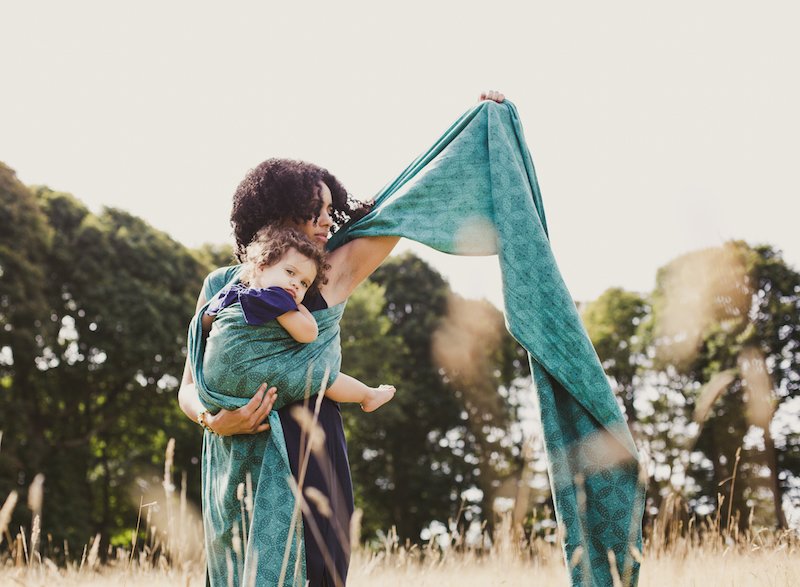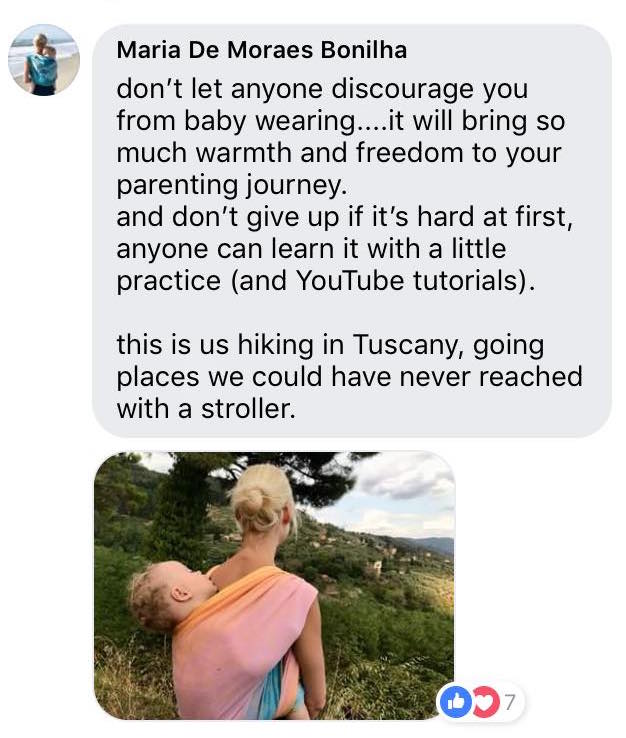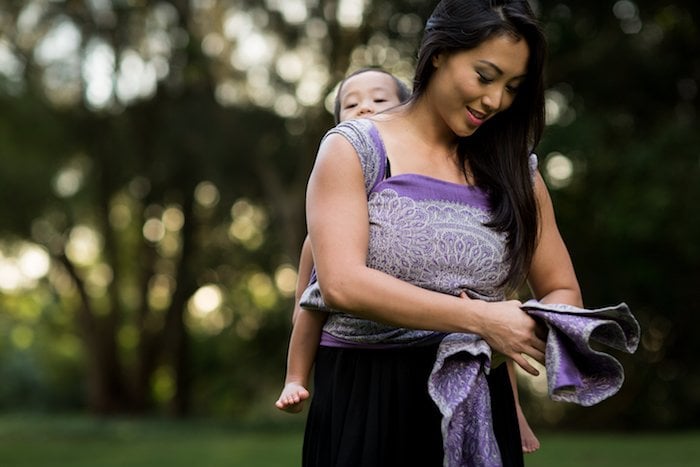Babywearing Tips for Navigating the Learning Curve
Babywearing wrap carriers can be intimidating at first. After all, our babies are our most precious cargo. The fear that she isn’t secured properly or could be injured somehow (particularly when dealing with a fragile newborn) is downright scary. But, with enough practice and by finding the answers to your biggest, scariest questions, you can be a baby wrapping pro before you know it.
Once equipped with the right know how, you can face your babywearing journey with confidence.
Practice With Just Your Wrap Before Adding Baby
Practice, practice, practice. It’s not just the way to get to Carnegie Hall; it’s also how to get rid of those jitters. One way to do this is to start without your baby, doing a complete run-through on your baby carrier wrap to get familiar with where the fabric goes next and when to tighten the top, middle, and bottom thirds of the wrap.
By practicing sans baby, you’ll develop the confidence and muscle memory to help when you’re finally wrapping your baby, especially if they tend towards the wiggly side.
Proper Positioning is Key
One of the biggest fears of new wrappers is proper positioning. While hip dysplasia is a real issue, being aware of wrapping at the natural spread squat position will guarantee that baby is comfortable and developmentally protected.
You also want to ensure that baby isn’t dangling too low and is close enough to kiss. Facebook group Clan Oscha mama, Sarah, suggests, “When you think it’s too tight, tighten more.” Melanie reiterates with her motto, “Tighten, tighten, and tighten some more!”
Check Out Baby Wrapping Tutorials
If you have a friend who’s been wrapping for awhile, schedule a get-together to get a bird’s eye view of how it’s done. The great thing about learning from a friend is that you can ask questions and they can help give you support (in more ways than one).
If you don’t have any friends or family who use a baby carrier wrap, don’t worry, the internet is full of tutorials. Don’t get overwhelmed, though. Just find a video for one carry that you like and watch it a few times before giving it a go. Notice whether they put the wrap on first (versus starting with the baby in their arms), notice the size of the wrap they use and how they tighten each strand.
Videos are by far the better means of learning since written tutorials can be complicated to understand; the visual tends to be better overall. Some YouTube channels you might find useful are Oscha Slings, Close and Calm, and Sheffield Sling Surgery.
Oh, and be sure to take your time when you begin your own wrapping journey; many of these videos are sped up (or done by experts who do this many times a day). Remember that one of the amazing benefits of babywearing is bonding with your baby, so slow down and enjoy it.
Get Familiar With the Baby Wrapping Lingo
Rails. Blends. Tails. Deep Seat. Passes. Carry. If you’re not used to it, the language can sound a bit like a sporting event or two baristas chatting at your favorite cafe. But, knowing the speak can make it easier to learn how to wrap (especially when you use videos to figure it all out).
So, here’s a quick primer:
Passes are layers which you create when you put a wrap on. A horizontal pass is the layer going straight across your body; a layer going from under your arm to over your shoulder is a cross pass.
A carry is the way you put the wrap on yourself and it consists of a combination of passes (as mentioned above).
Rails describe the sections of a wrap. The top rail is the top section, the bottom rail is the bottom section.
Tails refer to the ends of the wrap.
The M position (also called Deep Seat) refer to the natural, spread squat position (which resembles an “M” with their bottom lower than their knees) that we mentioned above.
Go for Safe and Comfortable First, Then Perfect Your Wrapping
Of course your main concern is to keep your baby safe and then that you’re both comfortable. Maybe this means that your passes are a little messy or you’re not showing the “prettiest” side of the wrap.
Don’t worry!
It doesn’t matter. You can tweak it as necessary and the more you do it, the more you’ll be able to perfect your carry. As an attached parent, you’re already tuned in to your baby. Watch his cues, and you’ll know if he feels safe and comfortable.
Clan Oscha mom Shell says, “Don’t give up! There’s a knack to babywearing and you can’t expect to be perfect at it straight away. Practice makes perfect. You can do it!” This seems to be a theme among babywearing parents – if at first you don’t succeed, try, try again!
And, finally, we thought it might be helpful to share some more advice from these Oscha mamas in the know:
Rhiannon suggests: “Shimmy your shoulder when trying to tighten the wrap, it really helps! It was a game changer for me.”
Zoe lets us know that “lots of babies go through a wrap strike when they first start walking but it doesn’t last long and you will get lots more slingy cuddles!”
Heather’s sage advice: “For wrapping, you don’t need to master every carry. Everyone is different, so find out what works for you and perfect that. This may or may not change over time as your baby gets older. #KangarooCarryForLife”
About wrapping in public, Pauline says to: “Tell yourself in advance of wrapping in public that you’re likely going to have to redo a few times from being nervous, your tails will get dirty, the pattern may be upside down in the end and people will gather, stare, comment and even touch but it’s okay. You’ve got this!”
And Maria “wraps it up” with her thoughts:
If you’d like to join Clan Oscha on Facebook, the Oscha team and their customers are on hand for plenty of encouragement or to troubleshoot your carries.


